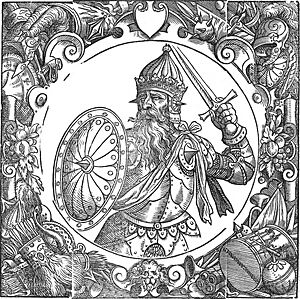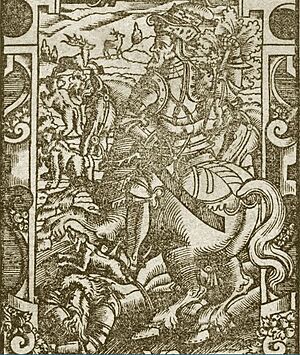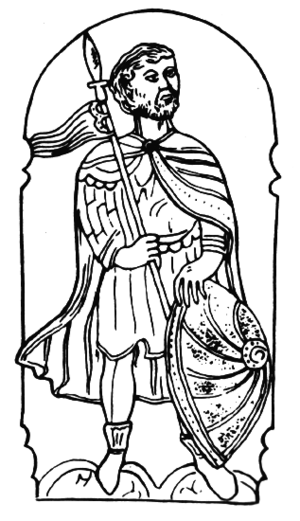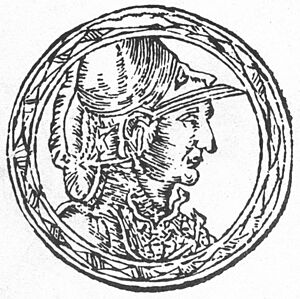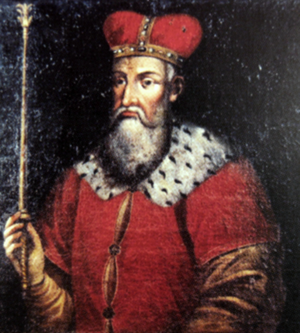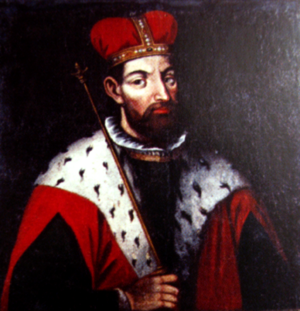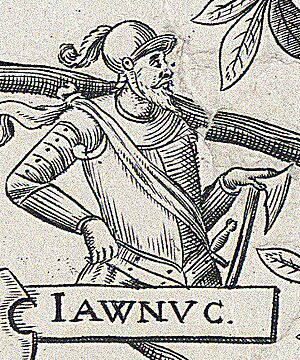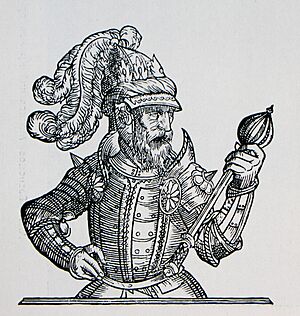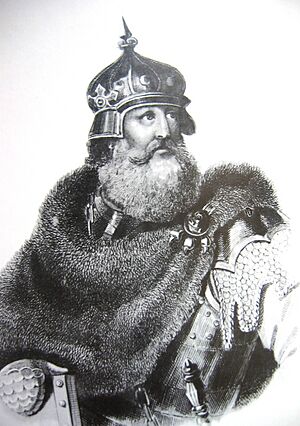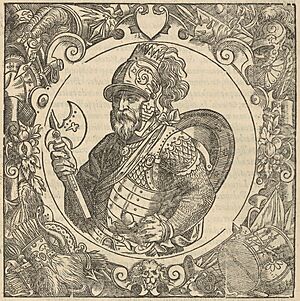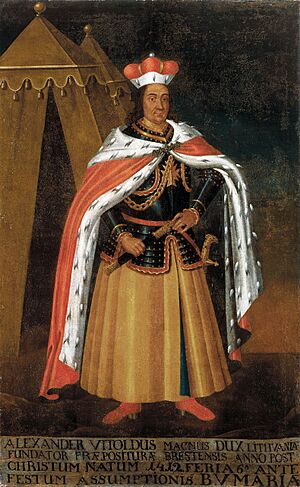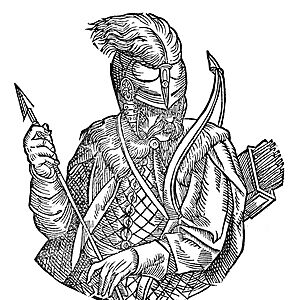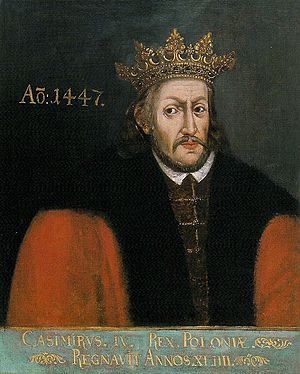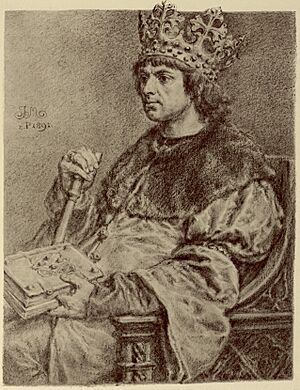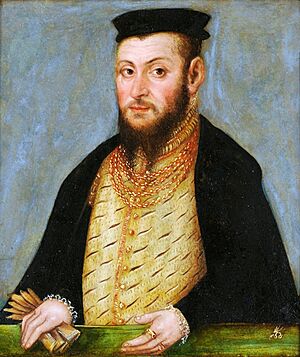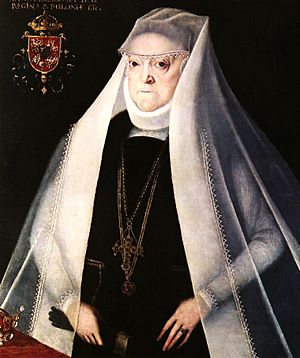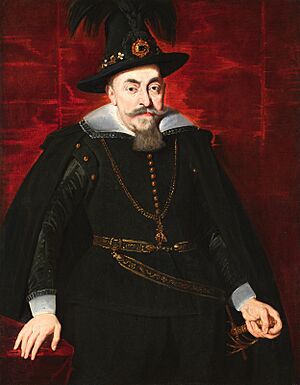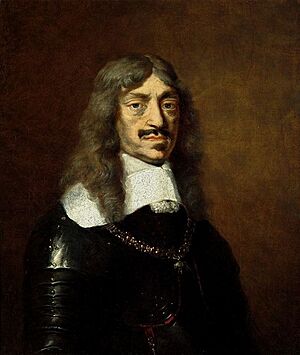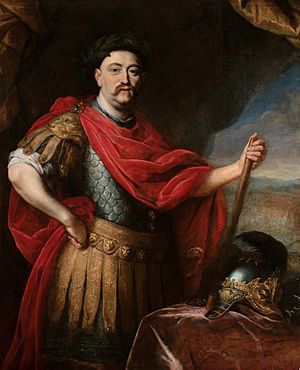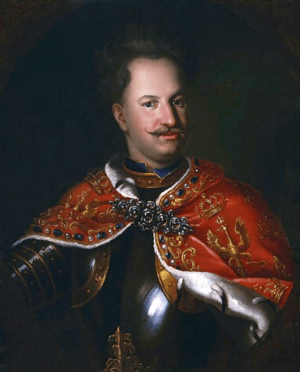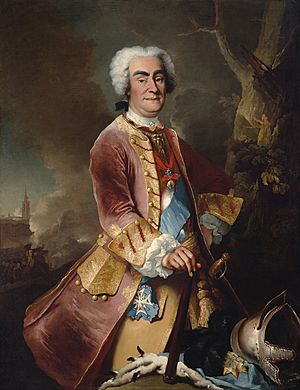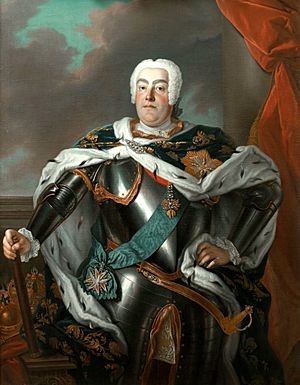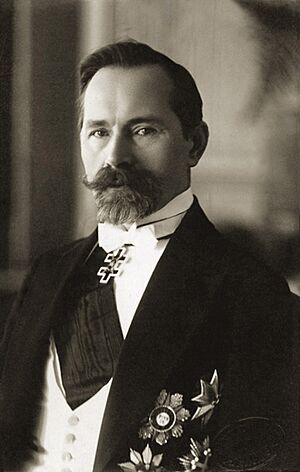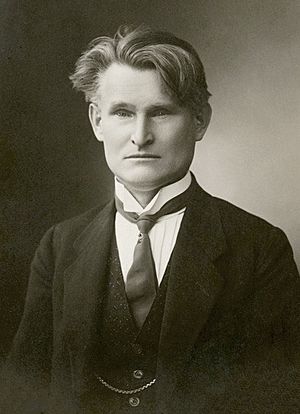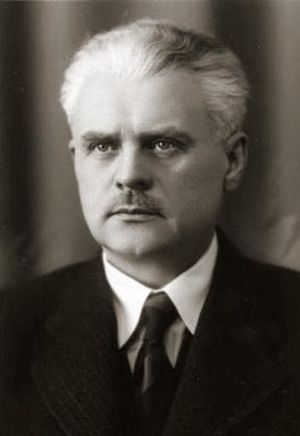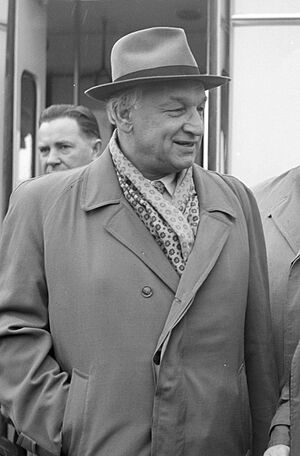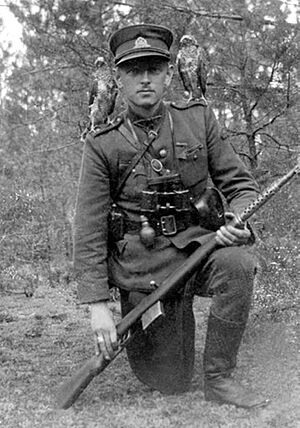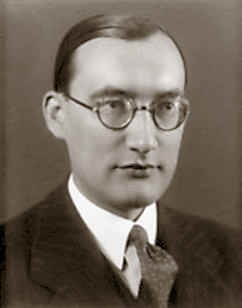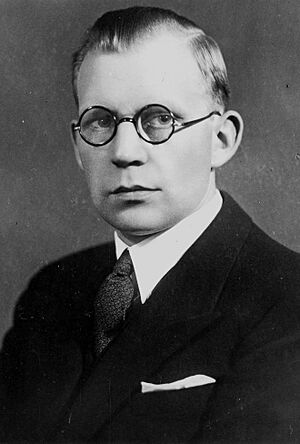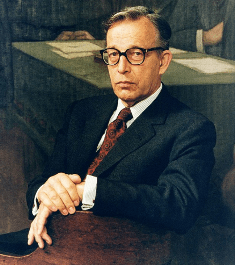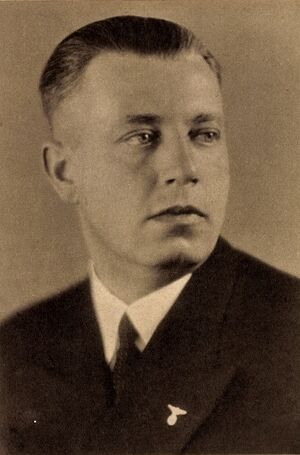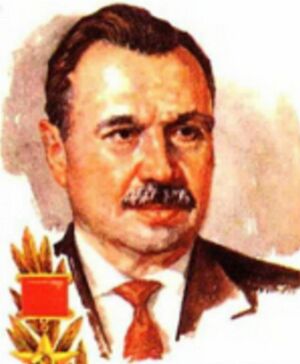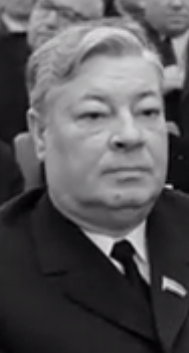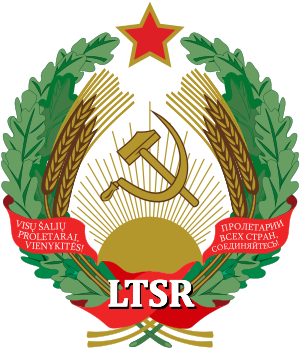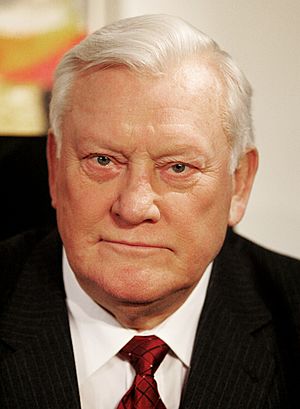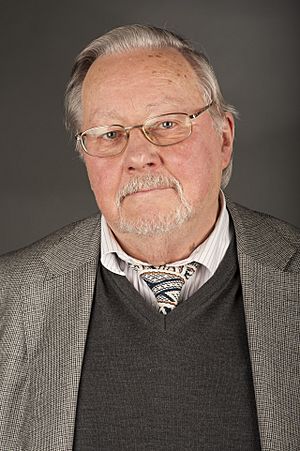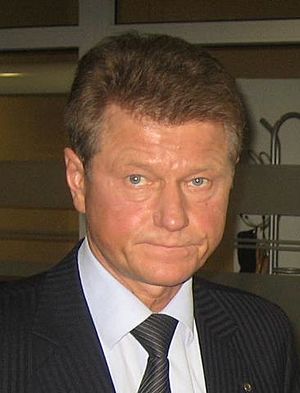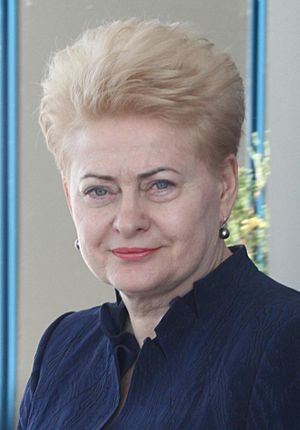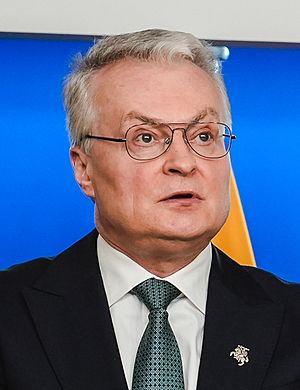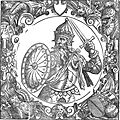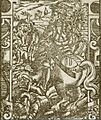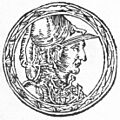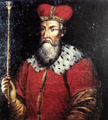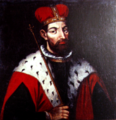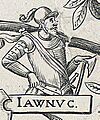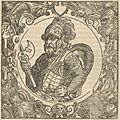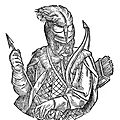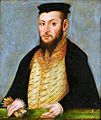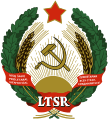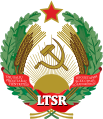List of heads of state of Lithuania facts for kids
Lithuania has a long and interesting history, and many different leaders have guided the country over the centuries. This article tells you about the people who were in charge of Lithuania, from its early days as a kingdom to the modern republic we know today. These leaders were sometimes kings, sometimes grand dukes, and sometimes presidents.
When Lithuanian monarchs were crowned a long time ago, a special hat called the Gediminas' Cap was placed on their heads by the Bishop of Vilnius in Vilnius Cathedral.
Contents
- Kingdom of Lithuania (1251–1263)
- Grand Duchy of Lithuania (1263–1569)
- Polish–Lithuanian Commonwealth (1569–1795)
- Kingdom of Lithuania (1918)
- Republic of Lithuania (1918–1940)
- Lithuanian Soviet Socialist Republic (1940–1941)
- German Occupation (1941–1944)
- Lithuanian Soviet Socialist Republic (1944–1990)
- Republic of Lithuania (1990–present)
- Timeline of Modern Leaders
- Images for kids
- See also
Kingdom of Lithuania (1251–1263)
This was the first time Lithuania was called a kingdom. The leader was known as the King of Lithuania. The dates for this period are a bit uncertain because there aren't many old records.
Mindaugas' Family (1253–1263)
| King | Picture | Time in Office | Important Notes |
|---|---|---|---|
| Mindaugas | 1253–1263 | He was first a Grand Duke, then became the King. He was killed in 1263. |
Grand Duchy of Lithuania (1263–1569)
After the Kingdom, Lithuania became a Grand Duchy. Its leaders were called Grand Dukes. Like the Kingdom period, some dates are not exact due to old records.
Mindaugas' Family (1263–1267)
| Grand Duke | Picture | Time in Office | Important Notes |
|---|---|---|---|
| Treniota | 1263–1264 | He was Mindaugas' nephew. He was murdered by people loyal to Mindaugas' son. | |
| Vaišvilkas | 1264–1267 | Mindaugas' son. He was murdered in 1268. |
Monomakh Family (1267–1269)
| Grand Duke | Picture | Time in Office | Important Notes |
|---|---|---|---|
| Shvarn | 1267–1269 | He was the son of Daniel of Galicia. |
Mindaugas' Family (1269–1285)
| Grand Duke | Picture | Time in Office | Important Notes |
|---|---|---|---|
| Traidenis | 1270–1282 | ||
| Daumantas | 1282–1285 | He died in a battle. |
Gediminas' Family (1285–1440)
This family ruled Lithuania for a very long time.
| Grand Duke | Picture | Time in Office | Important Notes |
|---|---|---|---|
| Butigeidis | 1285–1291 | ||
| Butvydas | 1291–1295 | ||
| Vytenis | 1295–1316 | ||
| Gediminas | 1316–1341 | He had 13 children. | |
| Jaunutis | 1341–1345 | ||
| Algirdas | 1345–1377 | He ruled with Kęstutis. | |
| Jogaila Algirdaitis | May 1377–August 1381 | ||
| Kęstutis | 1381–1382 | He was murdered while imprisoned. | |
| Jogaila Algirdaitis | August 1382–June 1434 | ||
| The Act of Kreva was signed in 1385. This meant Poland and Lithuania were ruled by one monarch, but they were still separate countries. | |||
| King of Poland and Grand Duke Jogaila Algirdaitis |
August 1382–June 1434 | ||
| Skirgaila | 1386–1392 | He might have been poisoned. | |
| The Astrava Agreement was signed in 1392. After a civil war, Vytautas took over. He and the leaders after him acted as regents (like temporary rulers) for the King of Poland until 1440. | |||
| Vytautas Vytautas the Great |
August 1392–October 1430 | He was known as Vytautas the Great. | |
| Švitrigaila | October 1430–August 1432 | ||
| Sigismund Kęstutaitis | 1432–1440 | He was murdered by people who supported Švitrigaila. | |
Jagiellon Family (1440–1569)
The Jagiellon family continued the rule of the Gediminas family. Even though Poland and Lithuania had a personal union since 1385, they started having the same ruler all the time with Casimir IV. These rulers kept separate titles for both countries.
| King of Poland and Grand Duke | Picture | Time in Office | Important Notes |
|---|---|---|---|
| Casimir IV Jagiellon | June 1440–June 1492 | He had 12 children. | |
| Alexander Jagiellon | July 1492–August 1506 | ||
| Sigismund I Sigismund I the Old |
December 1506–April 1548 | He had 8 children. | |
| Sigismund II Augustus | April 1548–July 1572 | ||
| The Union of Lublin was signed in 1569. This joined Poland and Lithuania into one big country called the Polish–Lithuanian Commonwealth. | |||
Polish–Lithuanian Commonwealth (1569–1795)
After the Union of Lublin, the King of Poland automatically became the Grand Duke of Lithuania. The first ruler for both countries was Sigismund II Augustus.
During a big war called the Deluge in 1655, Lithuania signed an agreement with Sweden, which technically ended its union with Poland. But Sweden lost the war, so the agreement didn't last, and the Commonwealth continued. Later, between 1772 and 1795, the Commonwealth was divided up by other countries, and Lithuania became part of the Russian Empire for 123 years.
The leaders during this time were called the King of Poland and Grand Duke of Lithuania.
| King of Poland and Grand Duke | Picture | Time in Office | Important Notes |
|---|---|---|---|
| Sigismund II Augustus | July 1569–July 1572 | He was the first monarch to introduce the idea of electing a king. | |
| Henry | May 1573–May 1575 | He was elected but left Poland to become King of France. | |
| Anna | December 1575–August 1587 (ruled) December 1575–September 1596 (officially) |
She was elected to rule with Stephen Báthory. She ruled alone until he arrived. | |
| Stephen Báthory | May 1576–December 1586 | He was elected to rule with Anna Jagiellon. | |
| Sigismund III | August 1587–April 1632 | He was Anna Jagiellon's nephew. He moved the capital from Kraków to Warsaw. | |
| Władysław IV | November 1632–May 1648 | He was also the King of Sweden for a time. | |
| John II Casimir | November 1648–September 1668 | He was a cardinal before becoming king. He gave up his throne. | |
| Michael I | June 1669–November 1673 | He was elected. | |
| John III Sobieski | May 1674–June 1696 | He was a very successful military leader. | |
| Augustus II | September 1697–1706 (1st time) | He was elected. He was removed from power in 1706 during a war. | |
| Stanislaus I | July 1704–July 1709 (1st time) | He was put in power by Sweden. He was exiled in 1709. | |
| Augustus II | July 1709–February 1733 (2nd time) | He was put back in power. | |
| Stanislaus I | September 1733–January 1736 (2nd time) | His election caused a war. He was removed from power in 1736. | |
| Augustus III | October 1733–October 1763 | He became king in 1733 and was crowned in 1734. | |
| Stanislaus II Augustus | September 1764–November 1795 | He was the last King of Poland and Grand Duke of Lithuania. His rule ended when Poland and Lithuania were divided up by other countries. |
Kingdom of Lithuania (1918)
After a long time, Lithuania declared its independence on February 16, 1918. The Council of Lithuania invited a German duke, Wilhelm of Urach, to become their king. He accepted and took the name Mindaugas II. But the Council changed its mind on November 2, 1918, because Germany was losing World War I.
Urach Family (1918)
| King | Picture | Time in Office | Important Notes |
|---|---|---|---|
| Mindaugas II | July 11, 1918–November 2, 1918 | He was invited to be king but the offer was later taken back. |
Republic of Lithuania (1918–1940)
After the short-lived kingdom, Lithuania became a republic.
Early Leaders of the Council of Lithuania
At first, Lithuania was led by the Presidium of the State Council. Its chairman was the actual head of state. The official position of President was created on April 4, 1919. Antanas Smetona was the first person to be called President.
| No. | Picture | Name | Time in Office | Important Notes |
|---|---|---|---|---|
| 1 | Antanas Smetona | November 2, 1918–April 4, 1919 | He was the chairman of the Presidium of the State Council. |
Presidents of the Republic of Lithuania
The role of President was officially created on April 4, 1919.
| No. | Picture | Name | Time in Office | Important Notes |
|---|---|---|---|---|
| 1 | Antanas Smetona | April 4, 1919–June 19, 1920 | He was the first President of Lithuania. | |
| Aleksandras Stulginskis (Acting) |
June 19, 1919–December 21, 1922 | He was acting President as the Chairman of the Constituent Assembly. | ||
| 2 | Aleksandras Stulginskis | December 21, 1922–June 7, 1926 | He was elected President by the Seimas (Parliament). | |
| Kazys Grinius | June 7, 1926–December 18, 1926 | He was elected President by the Seimas. | ||
| There was a coup d'état (a sudden, illegal takeover of government) in December 1926. | ||||
| – | Jonas Staugaitis (Acting) |
December 18, 1926–December 19, 1926 | He was acting President after the coup. | |
| – | Aleksandras Stulginskis (Acting) |
December 19, 1926 | He was acting President after the coup. | |
| Antanas Smetona | December 19, 1926–June 15, 1940 | He returned to power after the coup. | ||
| On June 15, 1940, the Soviet Union occupied Lithuania for the first time. | ||||
| – | Antanas Merkys (Acting) |
June 15, 1940–June 17, 1940 | He was acting President after the Soviet occupation. | |
| – | Justas Paleckis (Acting) |
June 17, 1940–August 15, 1940 | He was put in place by the Soviet leaders. The position of President was officially removed on June 24, 1940. | |
Leaders Recognized After Their Deaths
Some people who fought for Lithuania's freedom during difficult times were later recognized as acting Presidents.
| No. | Picture | Name | Time in Office | Important Notes |
|---|---|---|---|---|
| – | Jonas Žemaitis (Acting) |
February 16, 1949–November 26, 1954 | He was a general who led resistance against the Soviet occupation. | |
| – | Adolfas Ramanauskas (Acting) |
November 26, 1954–November 29, 1957 | He was a colonel who also led resistance against the Soviet occupation. |
Heads of the Lithuanian Diplomatic Service
After the Soviet Union occupied Lithuania in 1940, the last Foreign Minister, Juozas Urbšys, made sure that Stasys Lozoraitis would lead the Lithuanian diplomatic service from outside the country. This group acted like a government in exile, which was very important for keeping the idea of an independent Lithuania alive until it became free again.
| No. | Picture | Name | Time in Office | Important Notes |
|---|---|---|---|---|
| 1 | Stasys Lozoraitis | June 15, 1940–December 24, 1983 | He took office after the Soviet invasion. | |
| 2 | Stasys Bačkis | December 24, 1983–November 15, 1987 | He took office after Stasys Lozoraitis passed away. | |
| – | Stasys Lozoraitis Jr. | November 15, 1987–September 6, 1991 | He became the leader of the Diplomatic Service after Stasys Bačkis left Washington, D.C. |
Lithuanian Soviet Socialist Republic (1940–1941)
The Soviet Union took over Lithuania and created the Lithuanian SSR in July 1940.
First Secretaries of the Communist Party of Lithuania
During this time, the real power was held by the First Secretary of the Communist Party of Lithuania.
| No. | Picture | Name | Time in Office | Important Notes |
|---|---|---|---|---|
| 1 | Antanas Sniečkus | July 21, 1940–June 24, 1941 | ||
| On June 22, 1941, Nazi Germany invaded Lithuania. | ||||
German Occupation (1941–1944)
When Nazi Germany attacked the Soviet Union, Lithuania briefly declared its independence again. A temporary government was formed, but Germany soon occupied Lithuania. They created a region called Generalbezirk Litauen, which was part of a larger German-controlled area.
General Commissioners of Generalbezirk Litauen
These were the German officials in charge during the occupation.
| No. | Picture | Name | Time in Office | Important Notes |
|---|---|---|---|---|
| 1 | Adrian von Renteln | August 1941–August 1944 | He was the German general commissioner. | |
| In 1944, the Soviet Union reoccupied Lithuania. | ||||
Lithuanian Soviet Socialist Republic (1944–1990)
After the Germans left, the Soviet Union took control of Lithuania again and re-established the Lithuanian SSR. The Communist Party of Lithuania held the real power.
First Secretaries of the Communist Party of Lithuania
These individuals were the most powerful people in Lithuania during this period.
| No. | Picture | Name | Time in Office | Important Notes |
|---|---|---|---|---|
| 1 | Antanas Sniečkus | July 13, 1944–January 22, 1974 | He was the longest-serving First Secretary. | |
| – | Valery Khazarov (Acting) |
January 22, 1974–February 18, 1974 | He was acting First Secretary. | |
| Petras Griškevičius | February 18, 1974–November 14, 1987 | |||
| – | Nikolay Mitkin (Acting) |
November 14, 1987–December 1, 1987 | He was acting First Secretary. | |
| 3 | Ringaudas Songaila | December 1, 1987–October 19, 1988 | ||
| Algirdas Brazauskas | October 19, 1988–March 11, 1990 | |||
| On December 7, 1989, the Communist Party's "leading role" was removed from the constitution. | ||||
| On March 11, 1990, Lithuania declared its independence again. | ||||
Republic of Lithuania (1990–present)
After declaring independence on March 11, 1990, the leader of the Supreme Council was the official head of state. This changed in 1992 when a new Constitution created the office of President. Other countries started to recognize Lithuania's independence in September 1991.
| No. | Picture | Name | Elected | Took Office | Left Office | Political Party | Notes |
|---|---|---|---|---|---|---|---|
| - | Vytautas Landsbergis | – | March 11, 1990 | November 25, 1992 | Sąjūdis | As Chairman of the Supreme Council. | |
| The Speaker of the Seimas, Algirdas Brazauskas, was acting President from November 25, 1992, to February 25, 1993. | |||||||
| 1 | Algirdas Brazauskas | 1993 | February 25, 1993 | February 25, 1998 | Democratic Labour Party of Lithuania | He was the first President of the Republic of Lithuania. | |
| 2 | Valdas Adamkus | 1997–98 | February 26, 1998 | February 26, 2003 | Independent | ||
| 3 | Rolandas Paksas | 2002–03 | February 26, 2003 | April 6, 2004 | Order and Justice | He was removed from office. | |
| The Speaker of the Seimas, Artūras Paulauskas, was acting President from April 6, 2004, to July 12, 2004. | |||||||
| (2) | Valdas Adamkus | 2004 | July 12, 2004 | July 12, 2009 | Independent | ||
| 4 | Dalia Grybauskaitė | 2009 2014 |
July 12, 2009 | July 12, 2019 | Independent | She was the first female President of Lithuania and the first to be reelected. | |
| 5 | Gitanas Nausėda | 2019 2024 |
July 12, 2019 | Incumbent | Independent | ||
Timeline of Modern Leaders
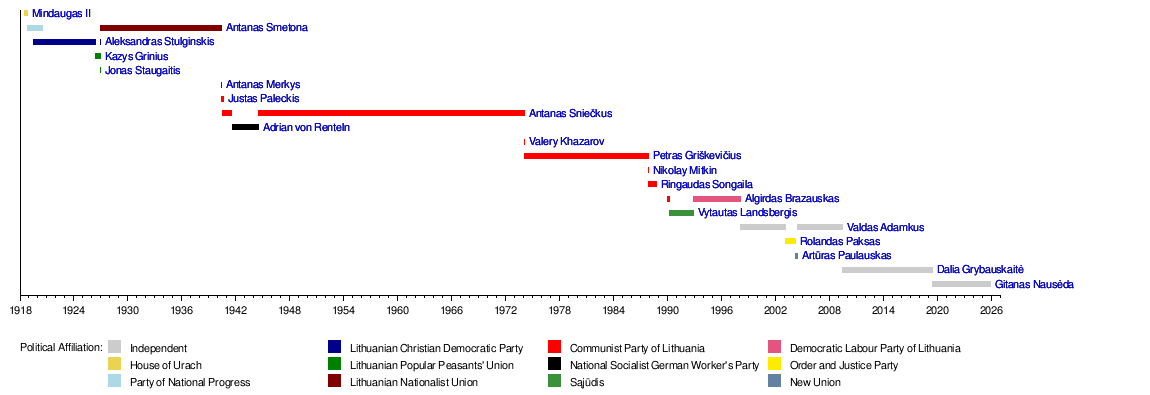
Images for kids
See also
 In Spanish: Anexo:Soberanos de Lituania para niños
In Spanish: Anexo:Soberanos de Lituania para niños
- List of Lithuanian monarchs
- List of Lithuanian consorts
- List of early Lithuanian dukes


